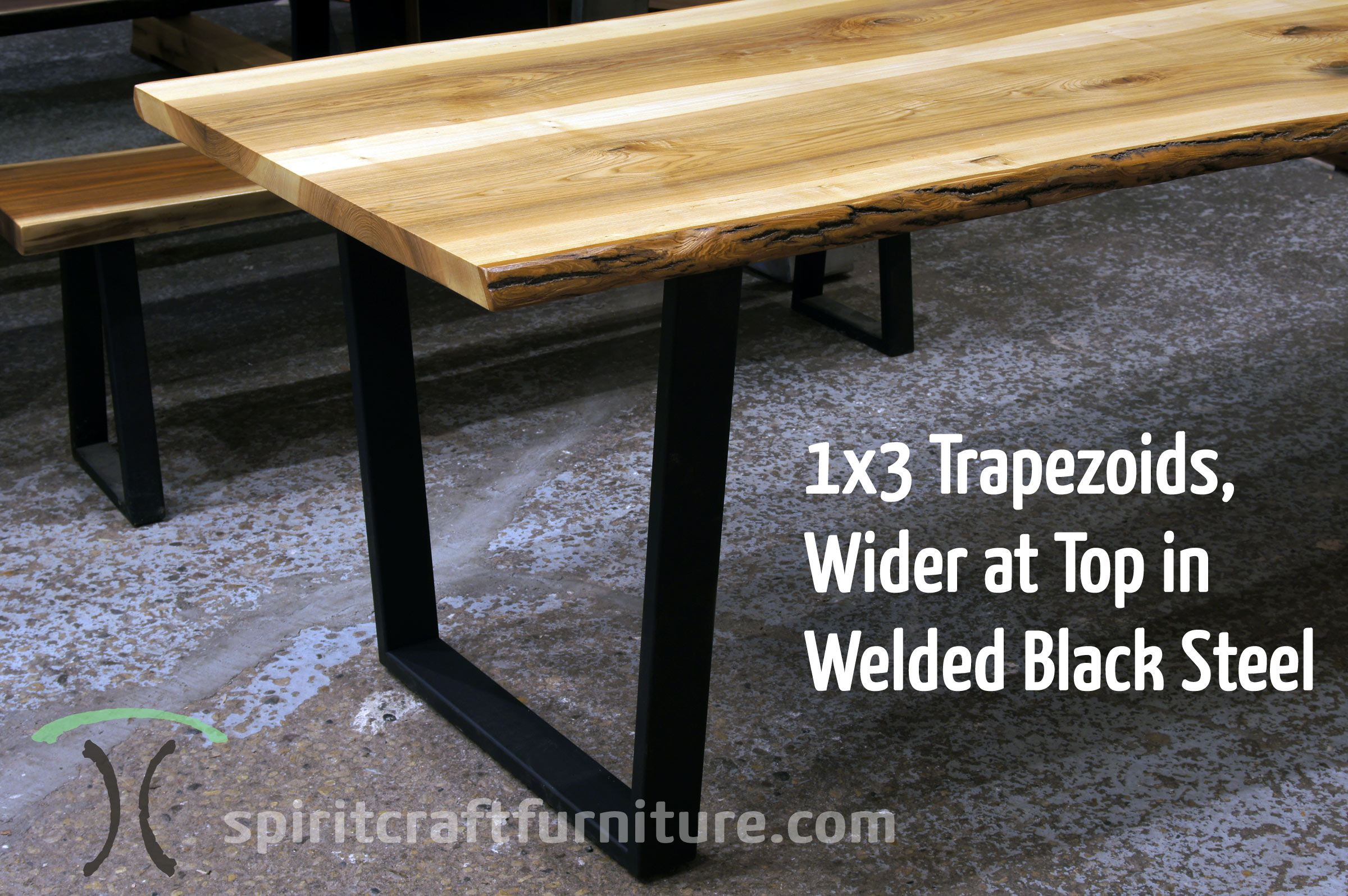
The threaded inserts we use can be purchased on amazon. We recommend using electrical tape on your bit to know how deep to go on your hole. You’ll want to trace the mounting plate, then router the area inside of the legs so they sit down in the wood.Īs pictured above, you’ll want to mount the legs using bolts and threaded inserts. This can be accomplished by using your router. On the table pictured below, we inlayed the legs since they only had 4 bolts to hold them. This step is optional, but some do prefer to do it. Wood typically moves around 1/8″ per foot wide it is, and the c-channel slots allow for that movement. The goal of the slotted holes on the c-channel is to allow the wood to expand and contract along the channel without moving up and down, but rather only side to side. This helps keep wood from warping, twisting, and cracking. We recommend using c-channel with slotted holes to help hold your slab flat. After you sand the wood, you’ll want to sit blankets on your saw horses or work area to avoid damage to the piece before you finish it. We use 40 grit, then 60, 80, 100, 120, 150, 180, and 220 when finishing with Odie’s oil or LED hardwax oil. When sanding, you should start with 40 grit and work your way up. Also, some finishes, such as rubio monocoat, do not recommend going high – as 120 grit is the maximum. The higher grit you go to, the easier the table can be scratched. You can go up to as high as 2000, but we typically do not. We recommend sanding to at least 120 grit. Sanding is the most crucial step to finishing your slab. We use a 1/8″ bullnose bit to accomplish this. If you’re looking to have a smooth edge on the cut ends of your live edge table, you’ll want to use a router to do a bullnose on them. The epoxy should dry within a day or two and your piece will be ready to work on again. Follow the instructions for mixing the resin and pour it in the cracks. Next, you’ll buy a two-part pour over epoxy. We recommend going heavier than you think needed to avoid the epoxy leaking out. For this step, you’ll apply tyvec tape to the bottom side of the slab to fill all of the voids. If your slab has cracks, we do recommend using epoxy to fill them. This is an optional step depending on your slab. We recommend debarking the slab to avoid future issues. The image below is much more acceptable for the moisture content of the slab than the first image.ĭebarking the slab can typically be done by using a small chisel and hammer. Ideally it will be around 8, but that all depends on the humidity of the home. This should still be below the 12% moisture content. Slabs typically warp as they dry and flattening is designed to remove the warp so the wood sits flat.Īfter the slab is surfaced, it will begin to reveal the wood that is closer to the center off the slab. At Lancaster Live Edge, we have a huge Woodmizer designed specifically for flattening slabs so they can be used for tabletops. For that reason, we recommend paying a hair more for a slab that is already surfaced.



There are DIY options you where you can use a router, but they’re often expensive and time consuming. The relative humidity can be found on most smart thermostats.įlattening the slab is typically something that can be done by the supplier. The best way to know what your moisture content should be is to consult this chart after checking the relative humidity of your home. If you check the moisture and it looks like the picture below, DO NOT proceed with building your piece as it will have issues once moved into a home. Anything over 12% is usually too high, which will cause warping or cracking almost immediately. In Pennsylvania, we typically recommend that slabs be around 8% to use. You’ll want to confirm it is kiln dried and ready to use. If you’re buying from a lumber store, they should have a moisture meter on hand. This is the step that is overlooked way too often. After you find the slab that meets your needs, you’re ready to start building! The rough cut slab will not look like it will once it has a finish. You’ll likely be looking at rough cut wood, so keep in mind that the shape and size is the most important thing. Though it will be more expensive, we recommend choosing a single slab instead of two bookmatch slabs, as this will keep you from having to find a large jointer to join them together. The most common size table we build is 8′ long by approximately 42″ wide. Step one for this process will be choosing a wood slab that meets your needs.


 0 kommentar(er)
0 kommentar(er)
